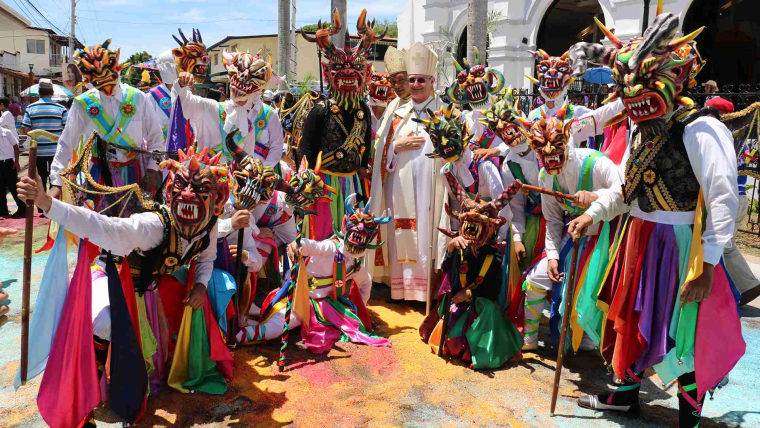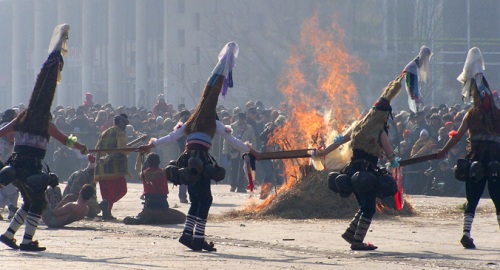
In Mexico, the feast of the Eucharist has been celebrated since at least the 17th and 18th centuries, marked by vibrant processions featuring a parade of iconic joker characters, including La Tarasca, El Diablo Cojuelo, giants, and Indigenous folk figures. These characters would dance their way through the cities, creating a lively spectacle. Central plazas became a bustling hub, filled with artisans and merchants who traveled from across the region. Many Indigenous people, dressed in traditional attire, performed dances and played various forms of music, contributing to the rich cultural atmosphere of the celebration.

Cathedral chapel masters were responsible for composing special musical pieces–such as songs, matins, and masses–for the Corpus Christi festival. This task was of great significance, according to the minutes preserved in the cathedral archives. The Día de Corpus (Day of Corpus Christi) became one of the most important festivals in Mexico, alongside the Natividad. By the 19th century, the festival grew even more popular, with composers such as José Mariano Elízaga and José Antonio Gómez continuing the tradition of composing music for the event. However, the Mexican Reform War and the conflict against the Second Empire (1863–1867) diminished the festival’s prominence. Over time, the custom of creating special music for the Corpus Christi festival gradually faded. Today, the festival is only observed in certain communities of southern Mexico, where processional dances and songs of praise are performed, much like those held in honor of regional patron saints.


Similar festivals are celebrated across Central America, particularly in Panama, where the event blends Catholic traditions with local customs and lively festivities. The celebration features theater, music, burlesque dances, and vibrant costumes and masks. In some communities, dances are performed on carpets made of flowers, enhancing the visual splendor of the occasion. After the procession, participants dance freely, gathering in the streets and in family homes to share food and drinks, reinforcing community connections. In certain celebrations, a day before the main event, a theatrical and musical performance reenacts the battle between good (represented by Michael the Archangel) and evil, personified by the devil and his followers, as they struggle for control over the human soul. The dances and other cultural expressions of Panama’s Corpus Christi festivals are included on UNESCO’s Representative List of the Intangible Cultural Heritage of Humanity.
This according to Diccionario enciclopédico de música en México (2006–2007). Find it in RILM Music Encyclopedias.
Watch a short video produced by UNESCO on the artistic expressions (including music and dance) of Panama’s Corpus Christi festivals below.





 On the eve of the event, youths go from house to house collecting wood for the ceremonial bonfire. In the morning the participants choose their roles and don the corresponding masks and sheepskin capes. The stock characters may include a groom, a bride, a devil, a priest, a gypsy, and a dancer with a bear. To the accompaniment of drums and shawms, the dancers parade through the village with abundant comical antics. The ceremony culminates with a spirited dance around the collective bonfire.
On the eve of the event, youths go from house to house collecting wood for the ceremonial bonfire. In the morning the participants choose their roles and don the corresponding masks and sheepskin capes. The stock characters may include a groom, a bride, a devil, a priest, a gypsy, and a dancer with a bear. To the accompaniment of drums and shawms, the dancers parade through the village with abundant comical antics. The ceremony culminates with a spirited dance around the collective bonfire.
